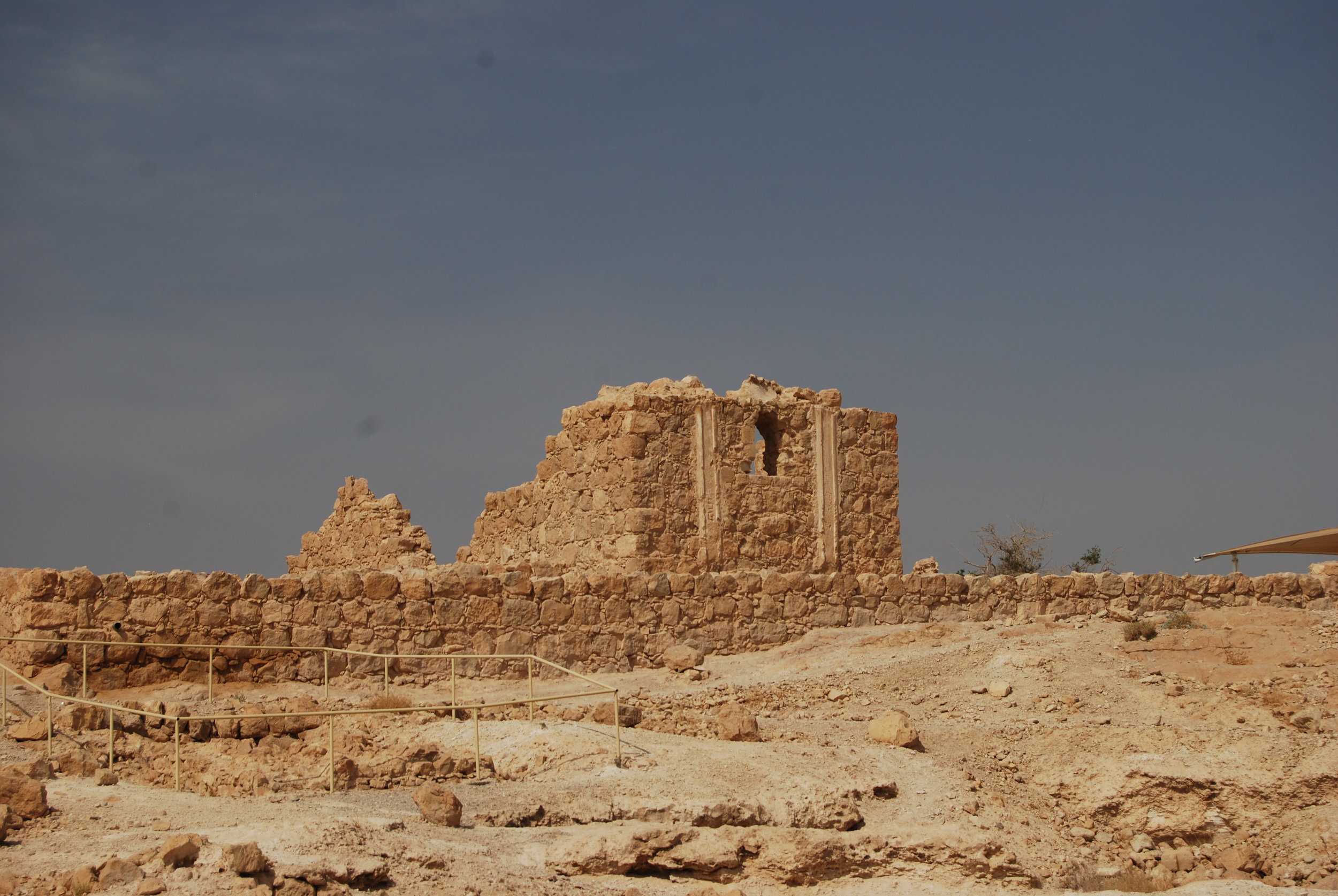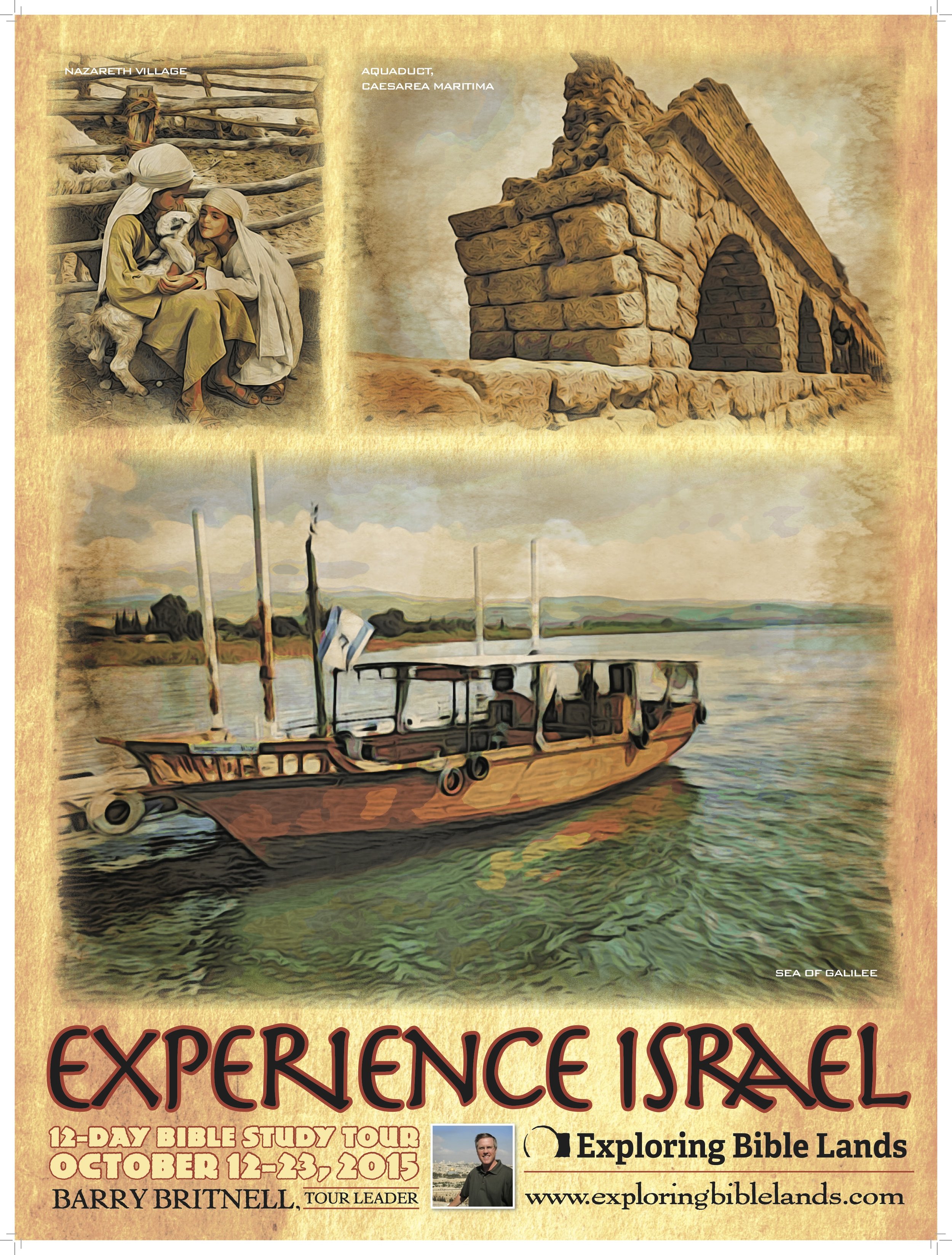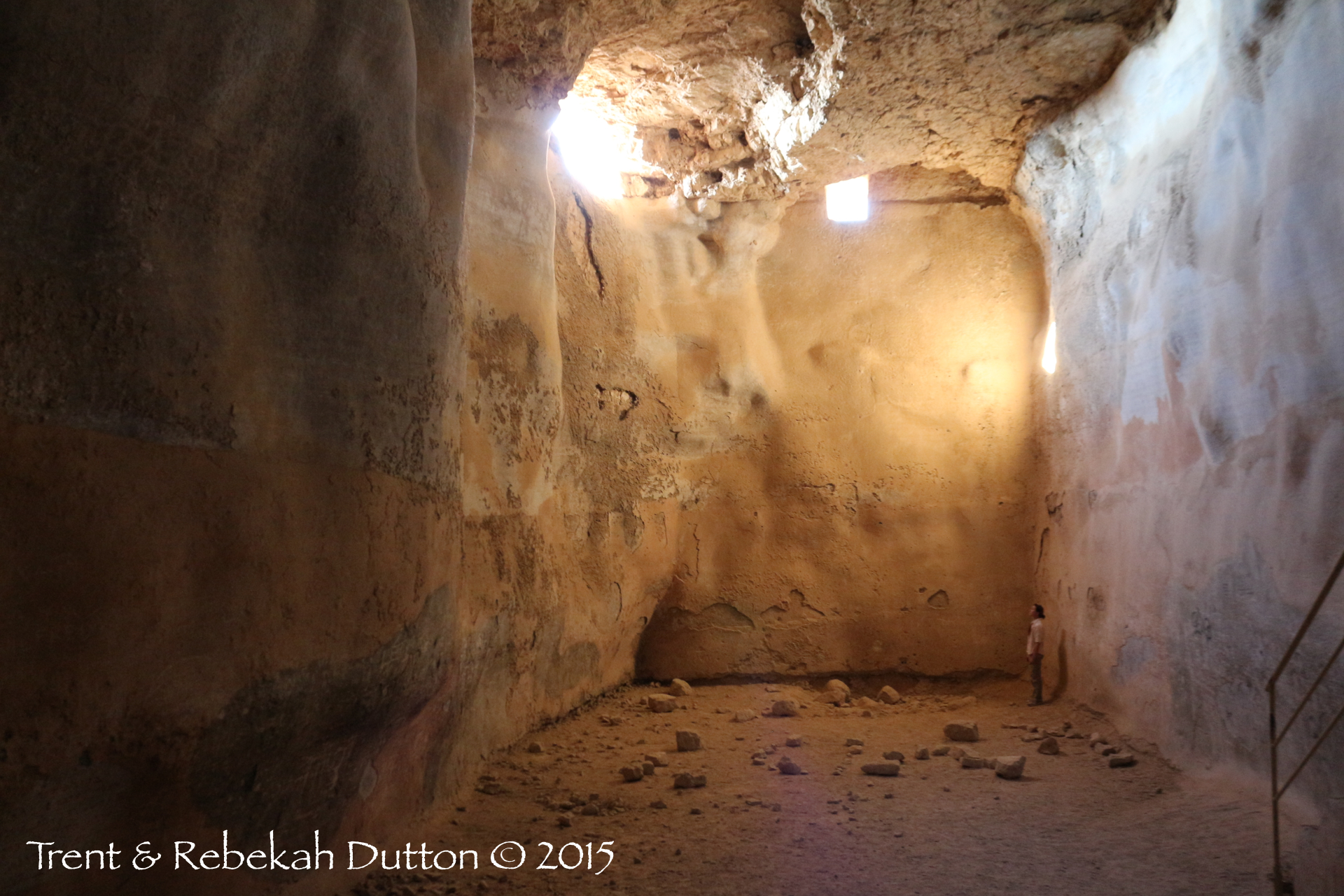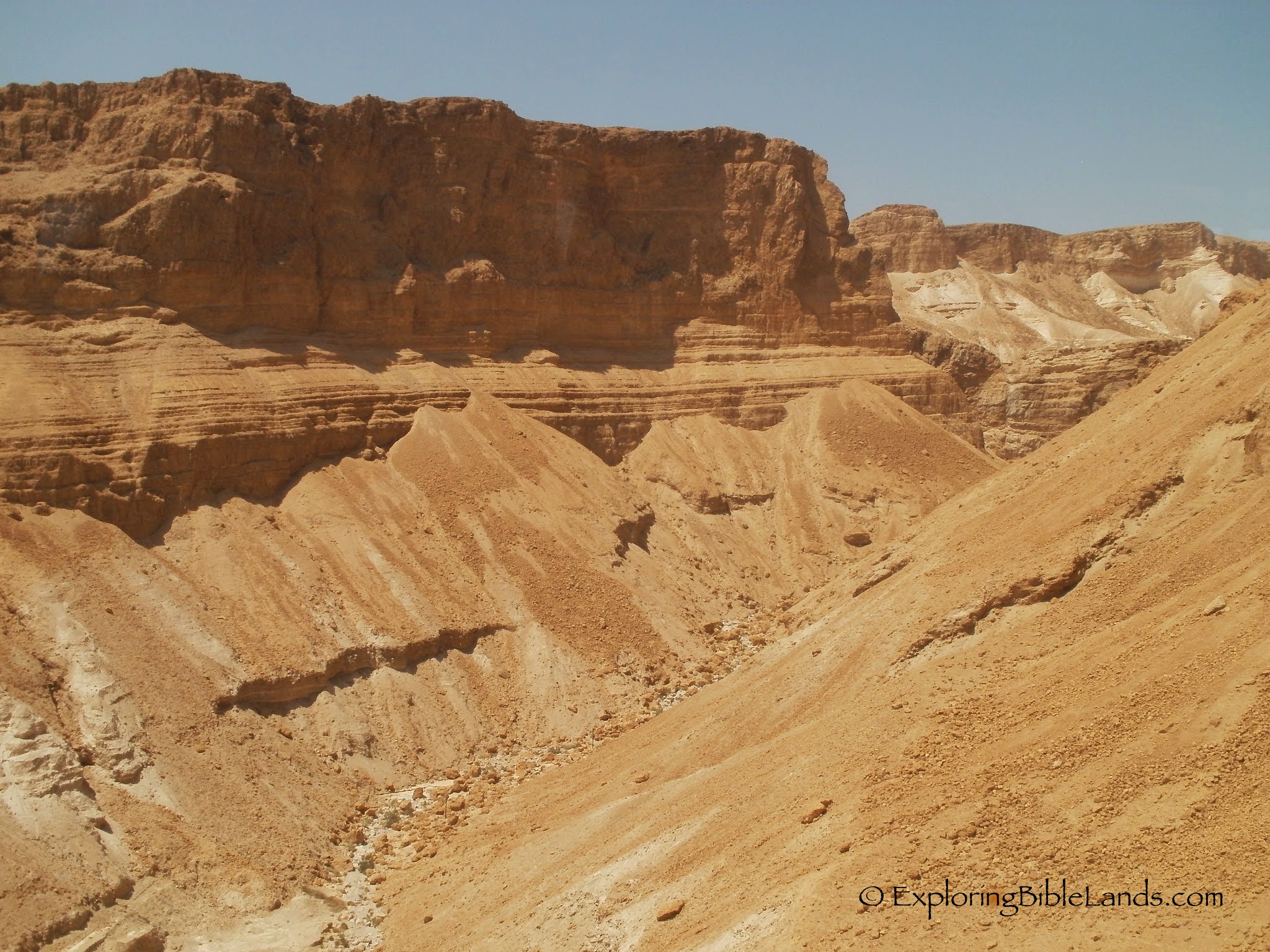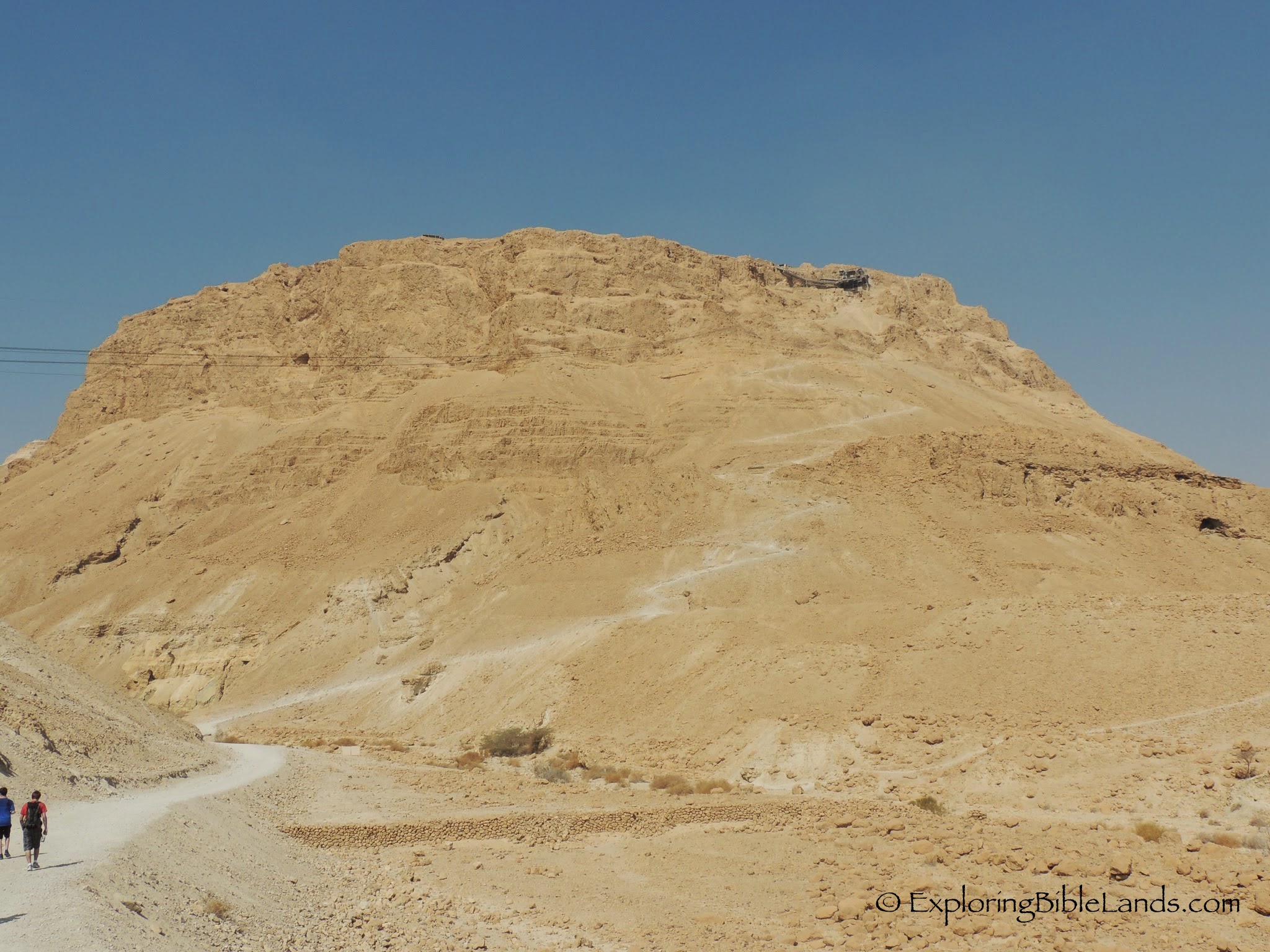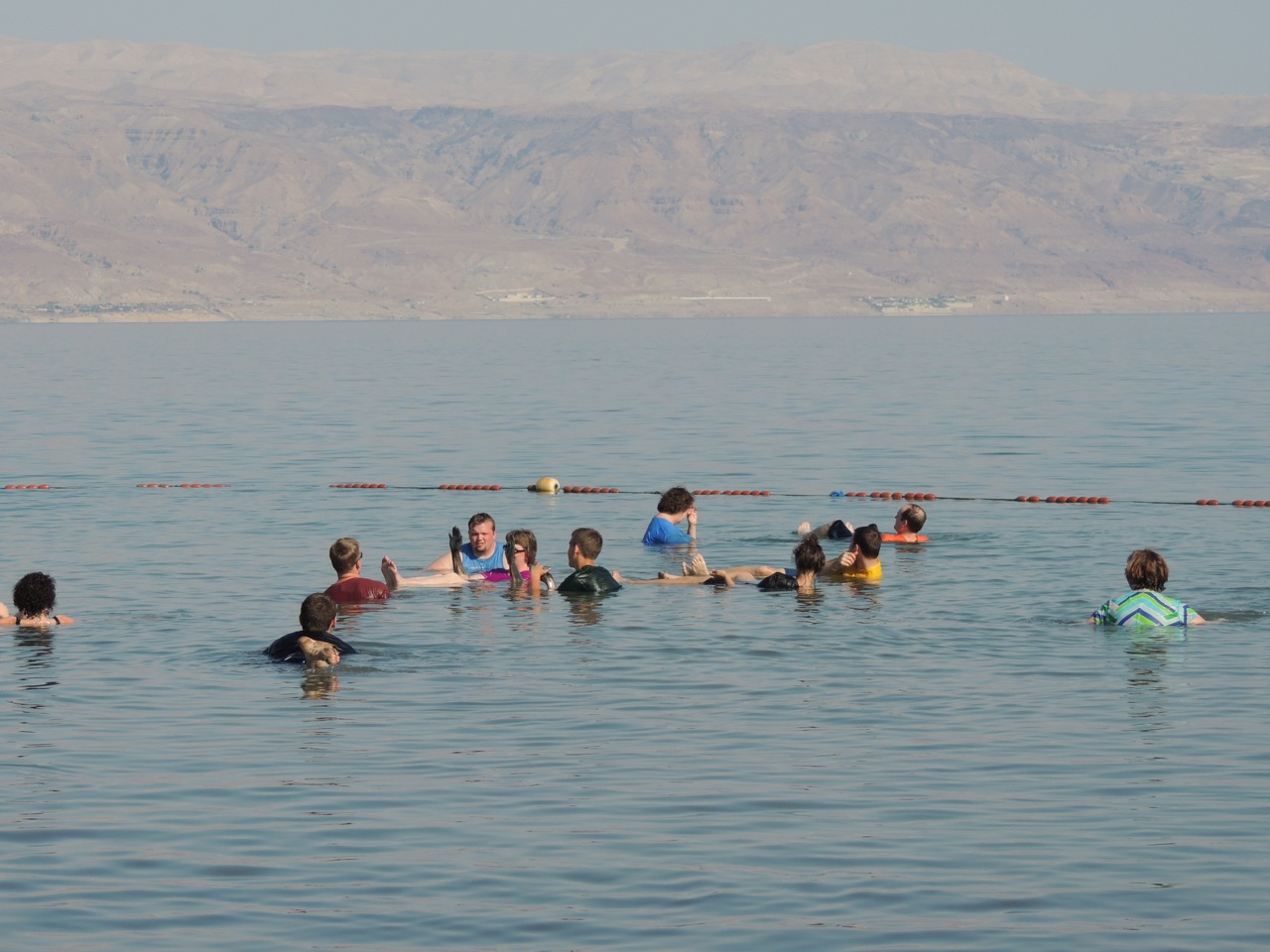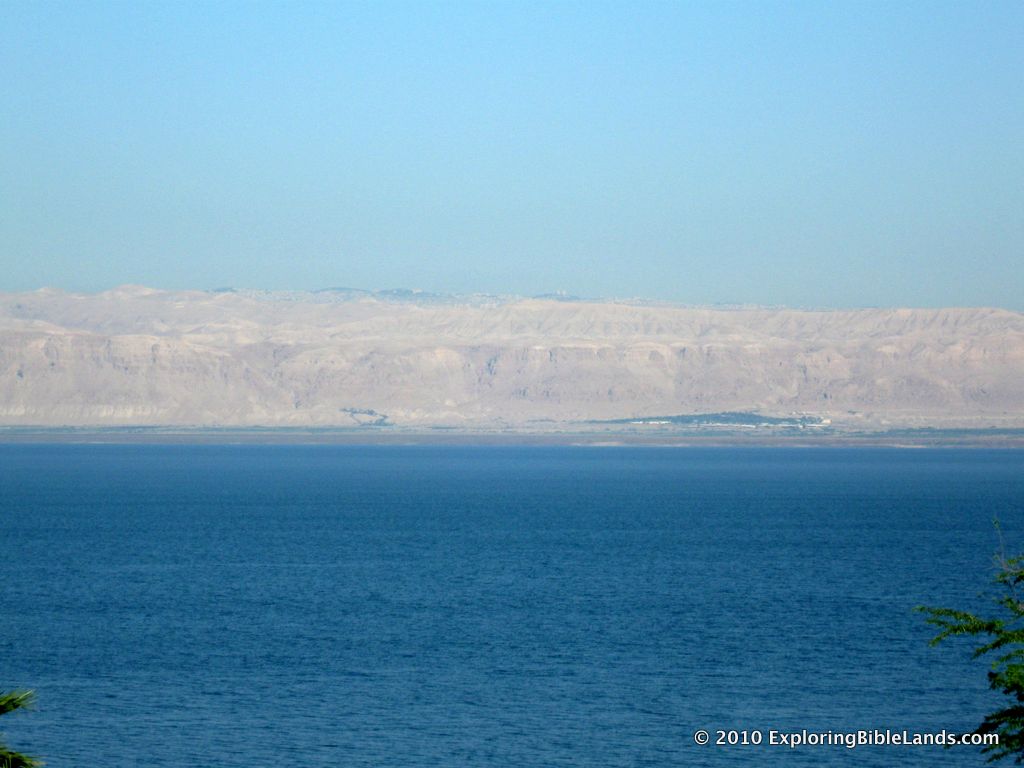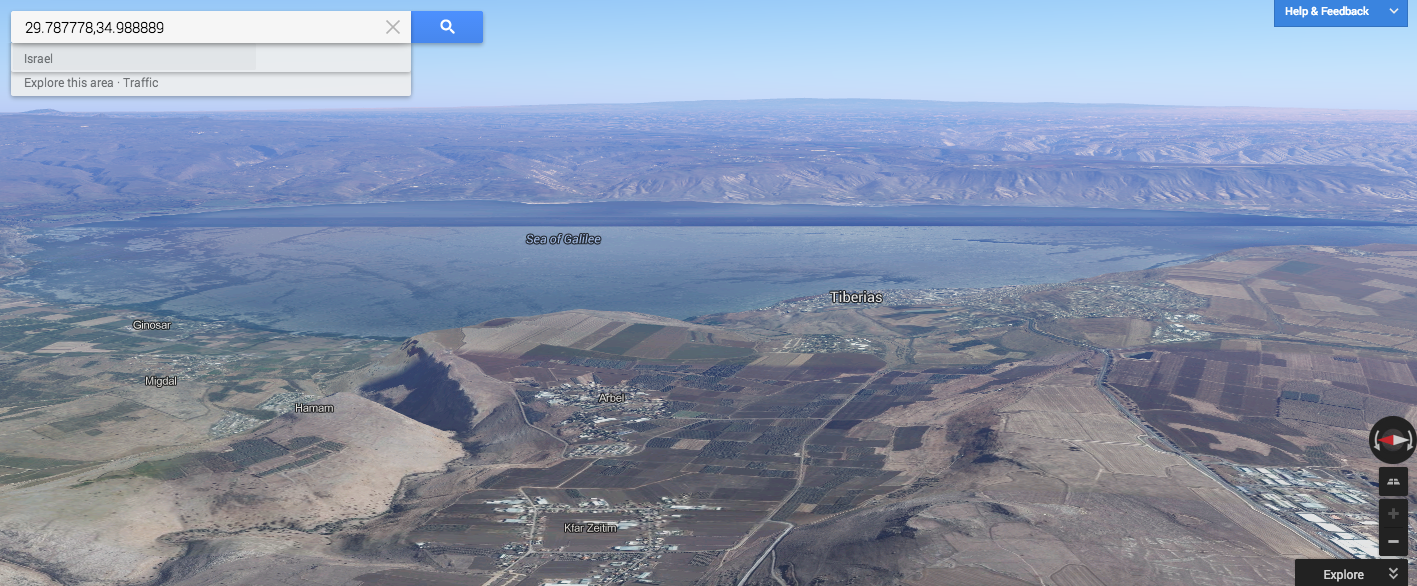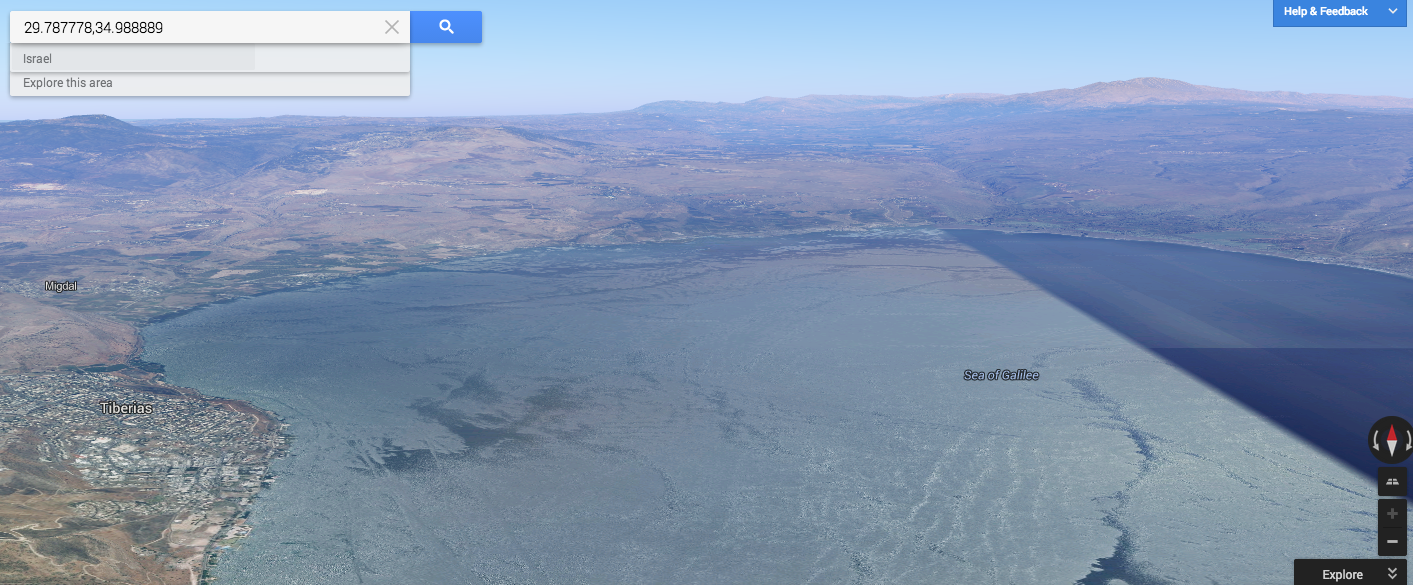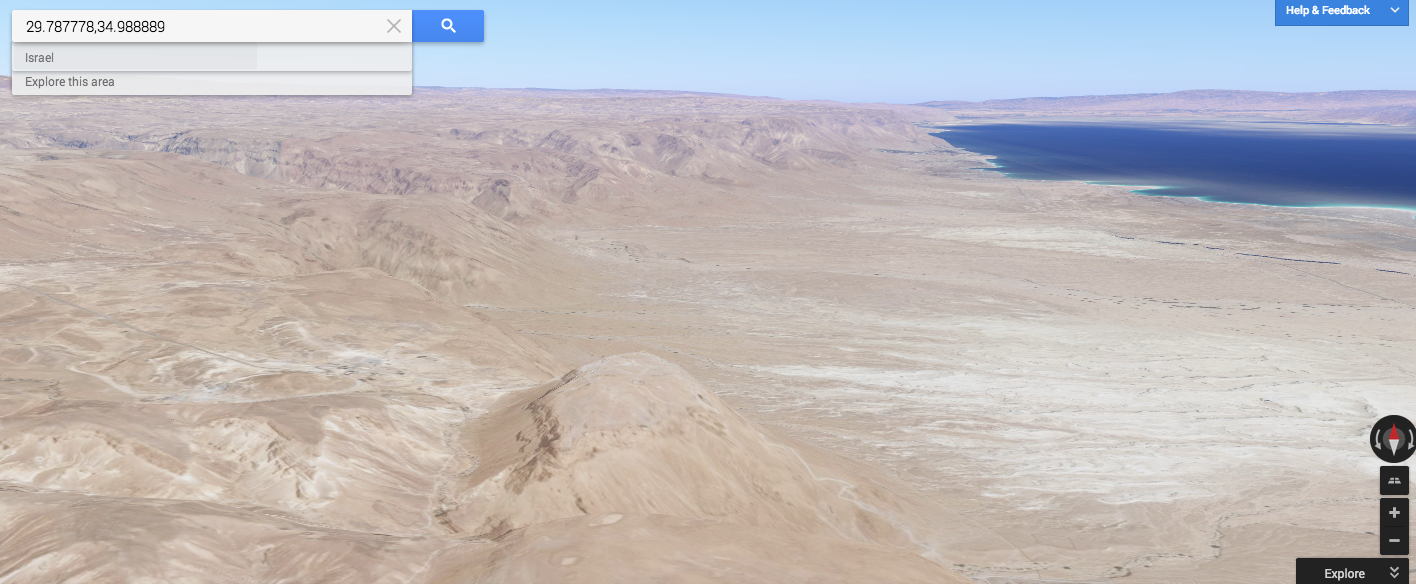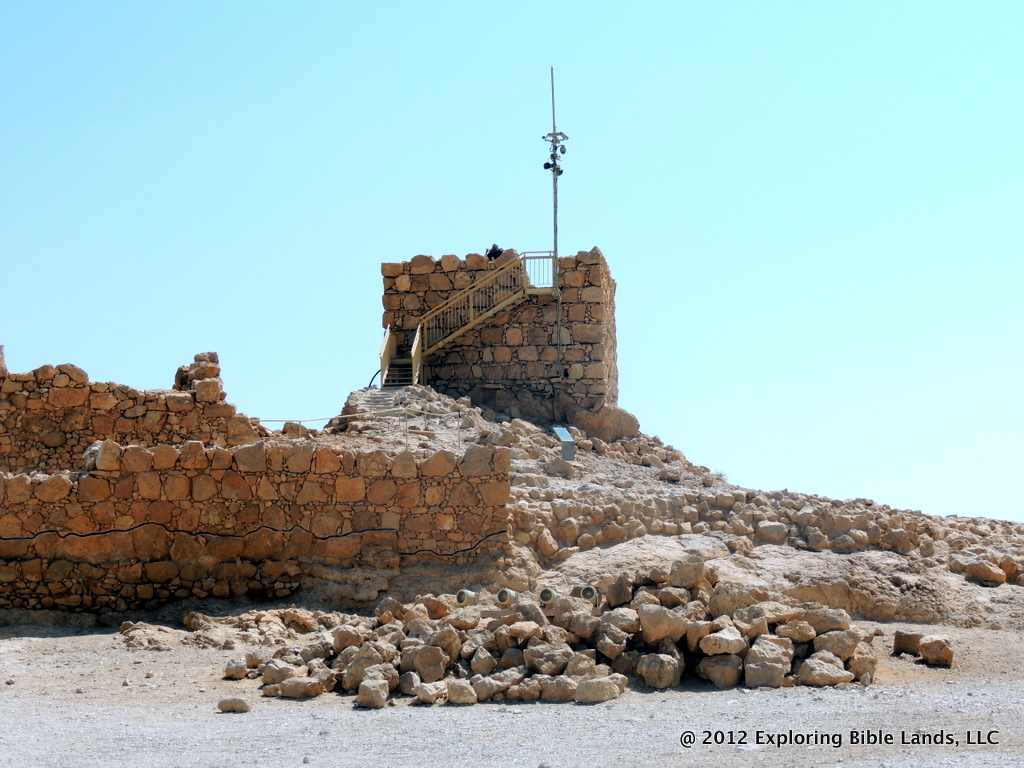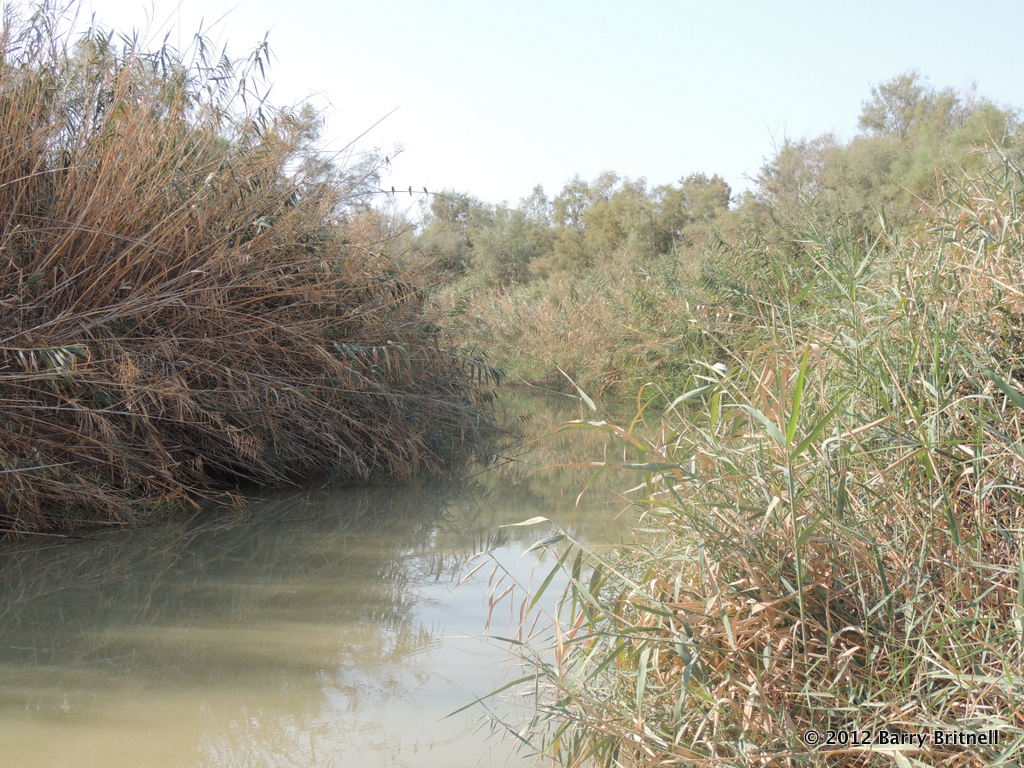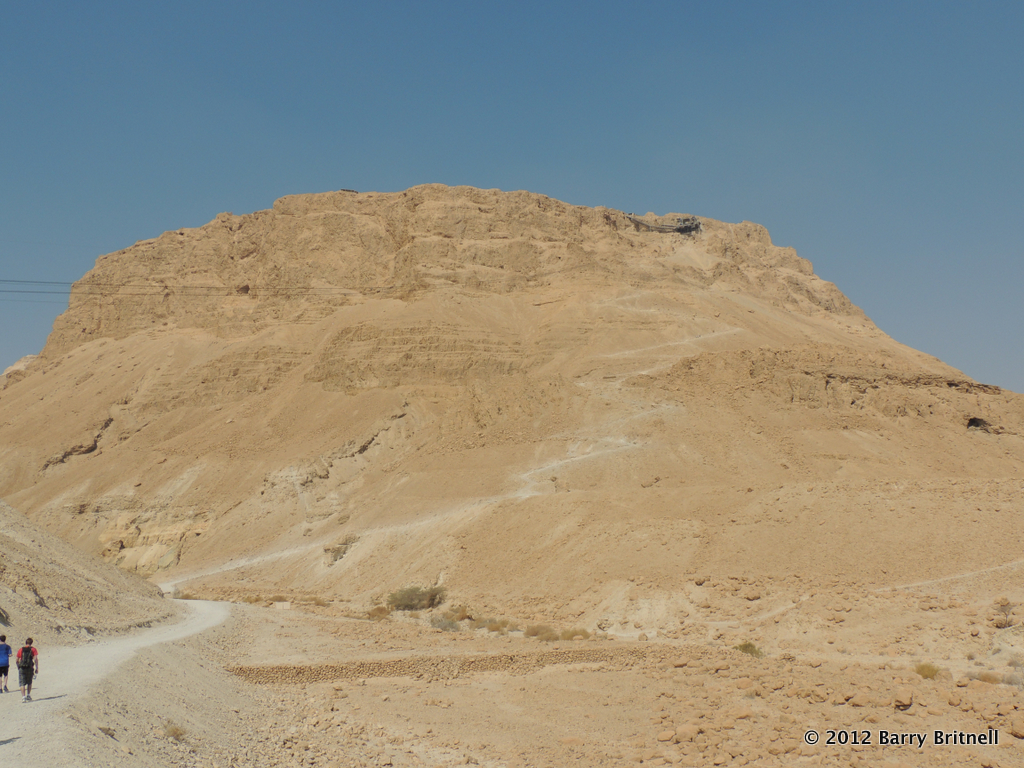Sunday is always a special day. But I always especially enjoy gathering with fellow Christians while traveling in Israel. Today was no exception. Members of the tour led us in prayer, led songs and presented thoughts for our consideration. It was nice to pause our tour and take time to worship God. Afterwards, we left the hotel and headed toward the Dead Sea. Our first stop was at Masada. King Herod built a huge palace on the top of this plateau to visit when he wanted to escape Jerusalem. In 70AD, almost 1,000 Jews hid on that mountain and finally took their own lives instead of becoming Roman slaves. The view from the top was a little hazy, but still breathtaking.
Our next stop was at En Gedi. Bible students know that this was the place that David fled to when he was being pursued by King Saul. Of course, he went there because there was water there. Even today, there was water flowing over a waterfall even though it has not rained here in six months.
The site of Qumran is famous because it is here where the Dead Sea Scrolls were found. After eating lunch, we were able to visit this site and learn how they were found and what it means to us.
We ended the day by driving down to the shores of the Dead Sea and allowing those who wanted to, the opportunity to float in this beautiful sea. Fun was had by all.
Tomorrow will bring new adventures and more things to discover. Until then, shalom.
-------
To read other blogs about the tour, here are a couple of links:
Jeremy Dehut - www.jeremydehut.com
Jane Britnell - journeyswithjane.blogspot.com



